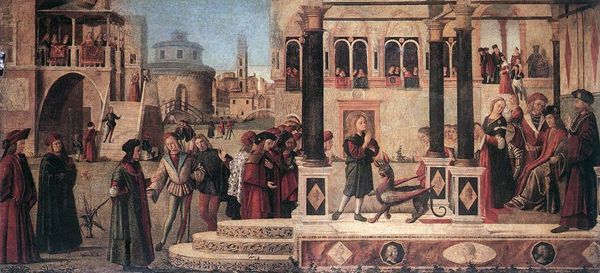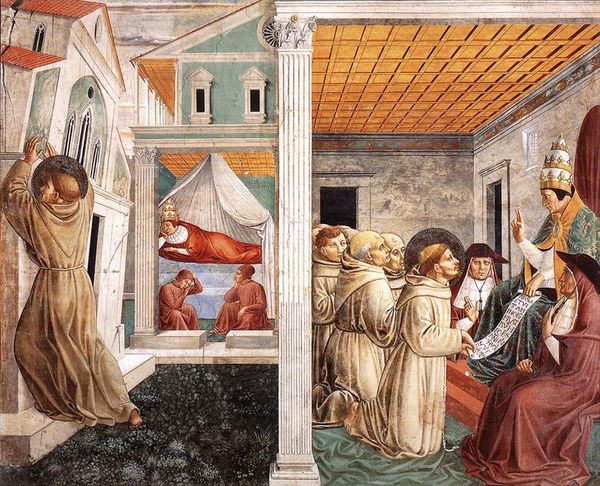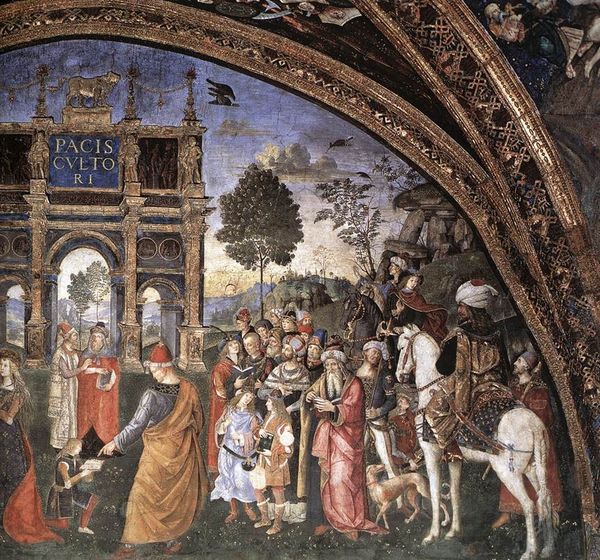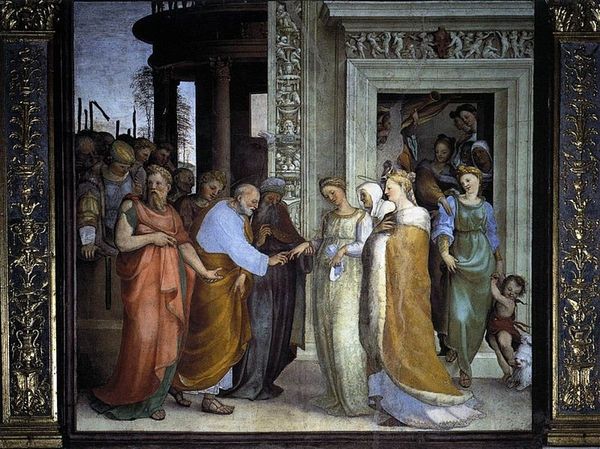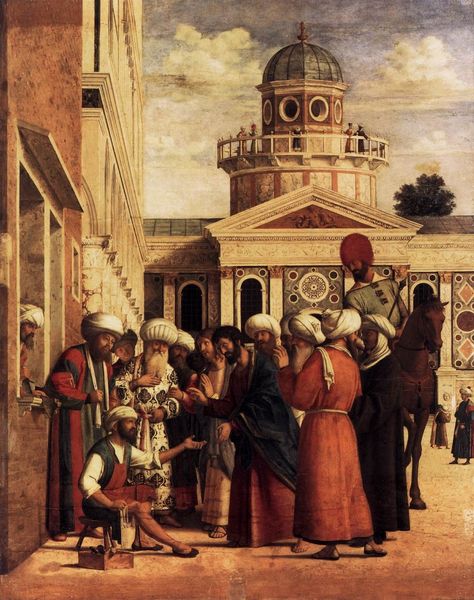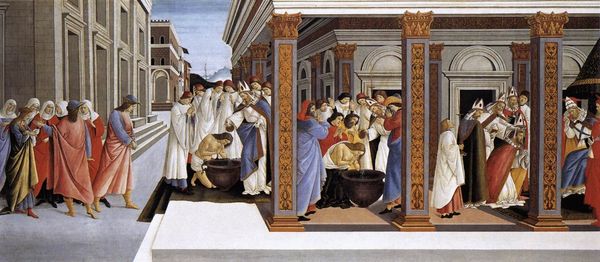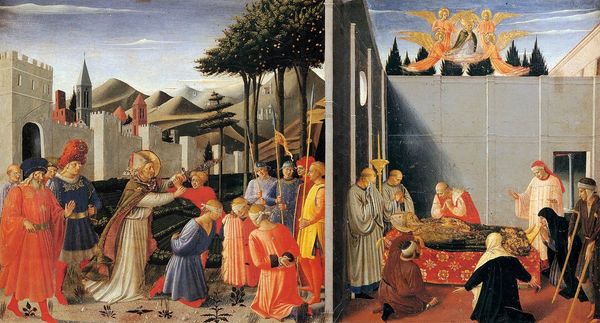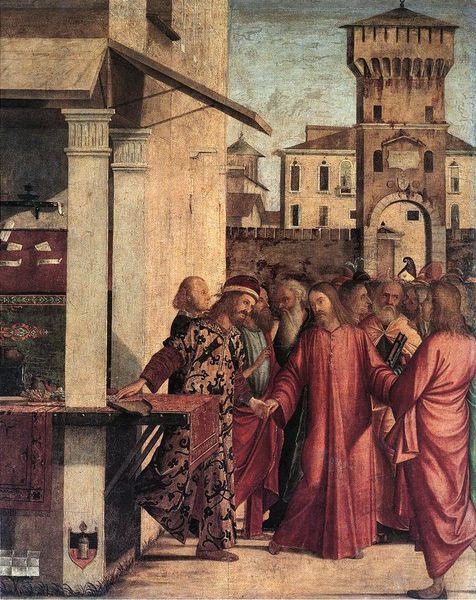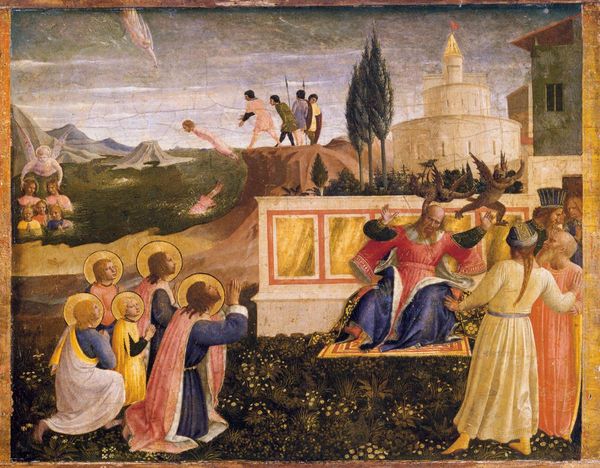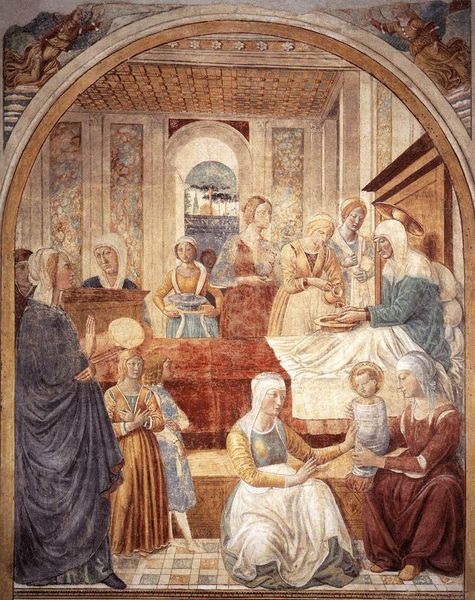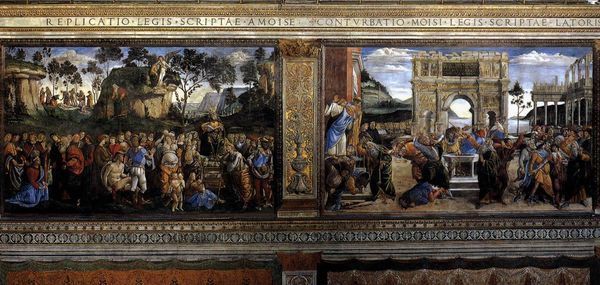
Finding and Recognition of the True Cross 1466
0:00
0:00
pierodellafrancesca
Basilica of San Francesco, Arezzo, Italy
painting, fresco
#
painting
#
holy-places
#
perspective
#
fresco
#
oil painting
#
cross
#
christianity
#
history-painting
#
italian-renaissance
Dimensions: 356 x 747 cm
Copyright: Public domain
Editor: Here we have Piero della Francesca's fresco, "Finding and Recognition of the True Cross," created around 1466. The colors are so muted, and yet there's a real sense of depth created by the perspective. It’s beautiful, but also kind of puzzling in its layout. What strikes you most about this work? Curator: For me, the significance lies in how Francesca transforms fresco, a traditional craft material, into a medium capable of conveying complex narratives. Notice the deliberate flatness in certain areas contrasting with his famed perspective. Editor: Flatness? I was so drawn to the illusion of depth. Curator: Precisely. Consider the act of creation. Fresco demands working directly onto the wall, a public and permanent declaration. This isn't just about illustrating a religious story; it's about Francesca showcasing his mastery of material production and controlling this space. The labor inherent in this process—the preparation of the plaster, the precise application of pigment—it all becomes part of the artwork’s meaning. Editor: So, you're suggesting that the way it was made, the physical process itself, tells part of the story? Curator: Absolutely. The social context is equally important. Commissioned for a church, the fresco had a clear function: to communicate religious ideas to a broad audience. Yet, by emphasizing perspective and creating realistic figures, Francesca elevates the craft of fresco into “high art,” blurring these conventional categories of art. The raw materials are humble but look how Francesca skillfully converts those into an eloquent message of Christian belief. Think about what that meant to his contemporaries. Editor: I see. It's not just a painting; it’s a statement about art and the role of the artist in society. I had never thought of it like that. Thank you! Curator: It highlights the intrinsic relationship between artistic practice and the historical era. Always consider that intersection, and you’ll start to notice the materials that compose an artwork hold great secrets!
Comments
No comments
Be the first to comment and join the conversation on the ultimate creative platform.

